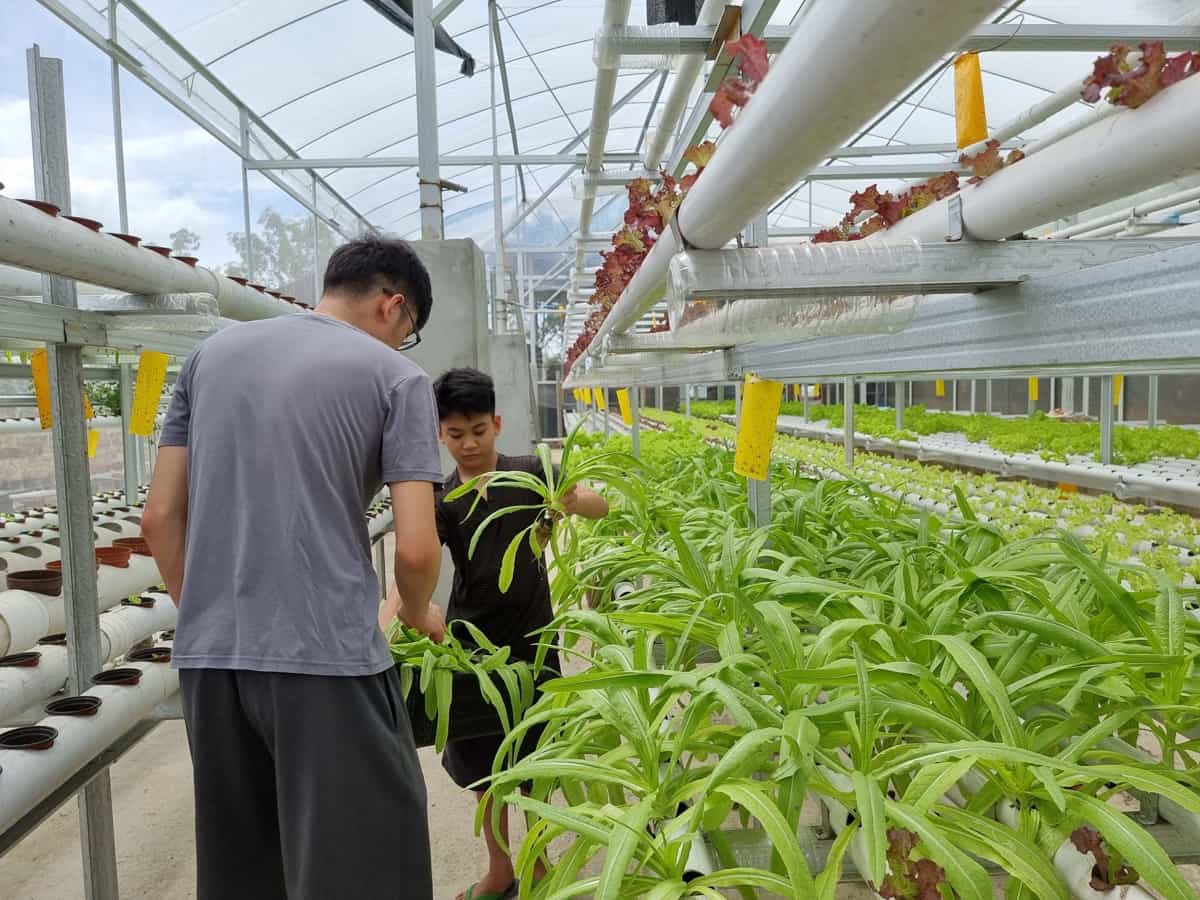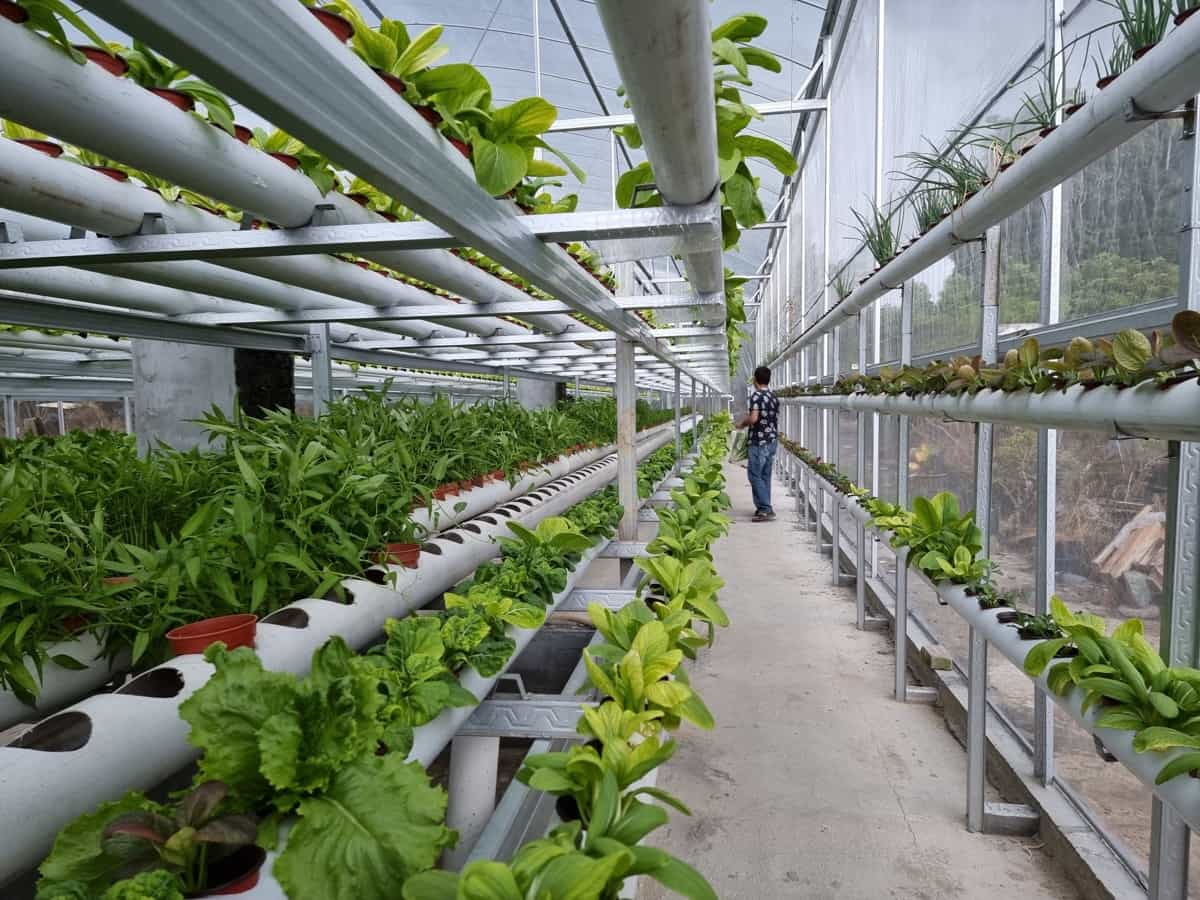Hydroponics has been celebrated as a revolutionary farming technique for high yield, space efficiency, and minimal water use. But as we delve deeper, it’s crucial to note that there are many challenges embedded in this technology. Hydroponics plants, while being a notable advancement, are not without their fair share of issues.

This article examines 11 disadvantages of Hydroponics that anyone venturing into this field must understand. These disadvantages include high initial setup costs, the complexity and technical knowledge required, reliance on electricity, risk of system failure, susceptibility to diseases and pests, water quality concerns, limited crop selection, dependency on nutrient solutions, lack of organic certification, and environmental impact.
11 Disadvantages of Hydroponics
High Initial Setup Costs
One of the main disadvantages of Hydroponics is the high initial investment required to start a hydroponic farm. The financial commitment needed is much higher than that of traditional soil-based farming. The setup involves purchasing or constructing hydroponic systems; buying grow lights, temperature and humidity controllers, pH level monitors, and nutrient solutions. These costs can add up and become a significant barrier for those wanting to enter the world of Hydroponics. Therefore, a thorough cost-benefit analysis is necessary before starting a hydroponic venture.
Complexity and Technical Knowledge Required
Another significant issue with Hydroponics is the level of technical expertise it demands. Unlike traditional farming, understanding how hydroponics work requires in-depth knowledge about nutrient solutions, pH levels, and adequate plant lighting conditions. One needs to monitor and adjust these conditions regularly for successful plant growth. Without this knowledge, achieving optimum plant growth in a hydroponic setup can be challenging. This complexity can be daunting for beginners and potentially dissuade people from adopting this farming method.
Reliance on Electricity
Hydroponic systems are heavily dependent on a continuous power supply. The system relies on electricity, from the water pumps to the artificial lights. This reliance poses two problems: the cost of electricity and the risk of power outages. The cost of maintaining a hydroponic farm can be high due to the constant need for electricity. Moreover, a power outage can be catastrophic for a hydroponic setup as it can halt the entire system, causing potential plant damage due to a lack of nutrients or lighting.
In case you missed it: Benefits of Hydrogen Peroxide for Garden Plants: Uses and Application Procedure

Risk of System Failure
Just like any other system, hydroponic systems are also susceptible to failure. There is always the risk of pumps breaking down, lights failing, or nutrient feeders not functioning as expected. Such failures can lead to significant losses as the plants might not survive without constant care and appropriate growing conditions. This risk adds another layer of uncertainty and unpredictability to the practice of Hydroponics.
Susceptibility to Diseases and Pests
Contrary to popular belief, hydroponic plants are not immune to diseases and pests. They can sometimes be more susceptible. If a single plant gets infected or infested, the disease or pest can spread rapidly through the water in the system, potentially devastating the entire crop. This is a serious disadvantage of a hydroponic system, making disease and pest management essential in hydroponic farming.
Water Quality Concerns
Water quality is vital for hydroponic farming’s success. The water used in hydroponic systems must be clean and free from potential contaminants. If the water quality is not maintained, it can lead to various problems, such as nutrient deficiencies, root diseases, and stunted growth. Moreover, maintaining the right pH level in the water is crucial for plants to absorb nutrients effectively.
Limited Crop Selection
Not all plants are suitable for hydroponic farming. The system favors certain types of plants over others. Leafy greens and herbs typically do well in hydroponic systems, but larger fruiting plants or root vegetables can be challenging to grow. This limitation narrows the variety of crops that can be grown, which can be a significant disadvantage for farmers looking to diversify their production.
Dependency on Nutrient Solutions
Hydroponic farming relies entirely on nutrient solutions to provide the necessary nutrients for plant growth. This dependency creates two main issues. First, the farmer must have a detailed understanding of plant nutrition to mix the correct nutrient solution. Second, these solutions can be costly and must be purchased regularly, adding to the ongoing costs of running a hydroponic farm.
Lack of Organic Certification
Given the use of nutrient solutions in hydroponic farming, these systems often fail to meet the requirements for organic certification. Organic farming typically relies on the natural breakdown of organic matter in the soil to provide nutrients to the plants, a process that doesn’t occur in Hydroponics. As a result, even though hydroponic farming can be sustainable regarding water use, it is often not considered truly organic.
Environmental Impact
While Hydroponics is often touted as a more environmentally friendly option due to its efficient use of water and space, it does have some environmental downsides. The reliance on electricity for lights, pumps, and climate control can result in significant energy use, potentially contributing to greenhouse gas emissions if the electricity comes from non-renewable sources. Moreover, the production and disposal of plastic materials used in the systems also contribute to environmental pollution.
Monitoring and Maintenance Overhead
Another significant disadvantage of Hydroponics is the intensive monitoring and maintenance it requires. For the system to run smoothly, the grower needs to constantly check the pH and nutrient levels, maintain the right temperature and humidity levels, clean the system to prevent the build-up of pathogens, and closely monitor plant health.
In case you missed it: How to Grow Orchids Hydroponically: Can Orchids Grow in Water?

This constant need for attention and intervention requires a significant time investment and can be labor-intensive. Unlike in traditional soil-based farming, where nature takes care of many of these factors, in Hydroponics, the responsibility falls squarely on the shoulders of the grower. This high maintenance overhead is a critical factor to consider when assessing the feasibility of a hydroponic farming operation.
Conclusion
Hydroponics, in its promise of high yields and efficient resource utilization, presents a futuristic vision for agriculture. However, one must pay attention to the multiple challenges it brings forth. High initial setup costs, the need for specialized knowledge, dependence on electricity, risk of system failure, vulnerability to diseases and pests, and water quality issues affect Hydroponics.
Furthermore, limited crop variety, reliance on nutrient solutions, lack of organic certification, significant environmental impact, and intensive monitoring and maintenance requirements outline the manifold disadvantages of Hydroponics. Hence, it is of utmost importance to undertake a comprehensive understanding of these downsides before deciding on the adoption of Hydroponics.
- Feed Your Flock for Less: Top 10 Tips to Save on Chicken Feed
- Ultimate Guide to Ossabaw Island Hog: Breeding, Raising, Diet, and Care
- Hatching Answers: The Top 10 Reasons Your Chickens Aren’t Laying Eggs
- Eggs and Economics: Breaking Down the Cost of Raising Backyard Chickens
- Defend Your Greens: Proven Methods to Keep Iguanas Out of Your Garden
- Ultimate Guide to Cinnamon Queen Chicken: A Comprehensive Guide for Beginners
- Ultimate Guide to California Tan Chicken: Breeding, Raising, Diet, Egg-Production and Care
- Ultimate Guide to Marsh Daisy Chicken: Breeding, Raising, Diet, and Care
- 10 Types of Chicken Farming Businesses You Can Start for Profits